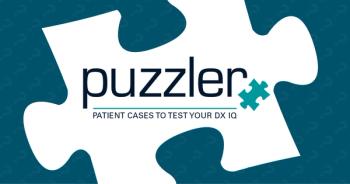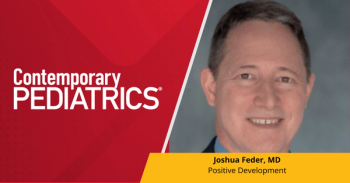
- September 2025
- Volume 41
- Issue 6
Surge in pediatric Mycoplasma pneumoniae hospitalizations reported in 2024
Mycoplasma pneumoniae caused 1 in 2 pediatric pneumonia hospitalizations in 2024, with sharp increases seen across all age groups, according to a recent CDC MMWR report.
A recent analysis of national data from the Pediatric Health Information System (PHIS) reveals a substantial increase in Mycoplasma pneumoniae–associated community-acquired pneumonia (CAP) hospitalizations among US children in 2024, following historically low circulation during the COVID-19 pandemic.1,2
From 2018 through 2024, researchers reviewed discharge diagnostic codes from 42 children’s hospitals to assess trends in M. pneumoniae infections among patients aged ≤18 years. Overall, 141,955 of 5,631,734 hospitalized children (2.5%) received a CAP diagnosis, with 16,353 (11.5%) also assigned an M. pneumoniae code. A marked increase was noted in 2024, during which M. pneumoniae accounted for 33% of all CAP hospitalizations, peaking at 53.8% in July. This represented a rate of 12.49 M. pneumoniae cases per 1,000 hospitalizations in 2024, compared with 2.12 per 1,000 during 2018–2023.
The highest burden in 2024 was observed in children aged 6–12 years (42.6%), followed by those aged 2–5 years (25.7%) and 13–18 years (21.1%). Although infants historically account for fewer M. pneumoniae cases, investigators observed significant increases in younger age groups. Among children aged 0–11 months, the rate of M. pneumoniae CAP increased 8.1-fold in 2024 compared with the 2018–2023 period; for children aged 12–23 months, the increase was 8.5-fold.
The researchers reported that “during July–December 2024, M. pneumoniae ICD-10 codes were listed for approximately one half of CAP hospitalizations at US children’s hospitals, the highest level in 6 years.” The authors suggest that the unusually high incidence may be attributed to increased population susceptibility after several years of low M. pneumoniae circulation.
Despite the rise in hospitalizations, the clinical severity of M. pneumoniae infections appeared to decrease. Median hospital length of stay dropped from 3 days (IQR: 2–6) in 2018–2023 to 2 days (IQR: 1–4) in 2024. Similarly, intensive care unit admission rates declined from 26.0% to 19.5%, and the in-hospital mortality rate was lower in 2024 (0.1%) than in prior years (0.5%).
Macrolide antibiotics, such as azithromycin, remain the first-line treatment for M. pneumoniae CAP. Among hospitalized children with M. pneumoniae CAP, 96.2% in 2024 received a macrolide or another effective antimicrobial, slightly higher than the 95.4% rate during 2018–2023.
Although children aged <5 years had previously represented a minority of M. pneumoniae CAP cases, the 2024 surge suggests that “during periodic increases in M. pneumoniae infections, this pathogen might account for a substantial proportion of CAP among children of all ages.” The report notes that the growing use of multiplex respiratory pathogen testing could help improve detection in younger patients.
Diagnostic code validation performed at Primary Children’s Hospital in Utah found that 86% of discharges with an M. pneumoniae code were confirmed by a positive polymerase chain reaction result. This lends support to the reliability of using ICD-10 codes for surveillance in pediatric populations.
The authors emphasize the need for clinical vigilance during years of high M. pneumoniae circulation. “Because M. pneumoniae infection cannot be identified based on physical examination alone, providers should consider and test for this pathogen as a cause of respiratory illness among children of all ages, especially during periods of high transmission.”
The report acknowledges several limitations, including potential bias in coding practices and the absence of data on coinfections or underlying conditions. Moreover, because most M. pneumoniae infections are mild, hospitalized cases likely represent only a subset of total infections.
Ongoing surveillance and characterization of circulating M. pneumoniae strains, including resistance patterns, are recommended to guide future diagnostic and treatment strategies.
References:
- Diaz MH, Hersh AL, Olson J, Shah SS, Hall M, Edens C. Mycoplasma pneumoniae Infections in Hospitalized Children — United States, 2018–2024. MMWR Morb Mortal Wkly Rep. 2025;74(23):394–400. doi:10.15585/mmwr.mm7423a1
- CDC. Clinical Care of Mycoplasma pneumoniae Infection. CDC. October 16, 2024. Accessed June 26, 2025. https://www.cdc.gov/mycoplasma/hcp/clinical-care/index.html
Articles in this issue
3 months ago
CPAP/bilevel PAP in the home setting4 months ago
Patches of hair loss on scalpNewsletter
Access practical, evidence-based guidance to support better care for our youngest patients. Join our email list for the latest clinical updates.










